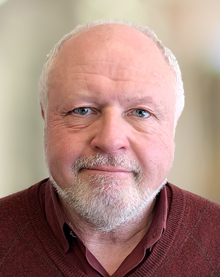Printed in the Fall 2023 issue of Quest magazine.
Citation: Smoley, Richard "From the Editor's Desk" Quest 111:4, pg 2
 “God is light,” says the Bible (1 John 1:5)—a statement repeated so often that we take it for granted. But it is far from exactly true. God is not light in a purely physical sense. When you go into a dark room and turn on the switch, there is not more God in the room.
“God is light,” says the Bible (1 John 1:5)—a statement repeated so often that we take it for granted. But it is far from exactly true. God is not light in a purely physical sense. When you go into a dark room and turn on the switch, there is not more God in the room.
To say “God is light” is a metaphor, and a metaphor is not a statement of identity. When Shakespeare writes, “Shall I compare thee to a summer’s day?” it is clear that the addressee differs from a summer’s day in certain important ways not mentioned in the sonnet.
We may conclude that the light that we call God is not the same thing as physical light. At first, this passage from The Secret Doctrine (1:70) might not appear to help:
According to the Rosicrucian tenets . . . “Light and Darkness are identical in themselves, being only divisible in the human mind”; and according to Robert Fludd, “Darkness adopted illumination in order to make itself visible.” According to the tenets of Eastern Occultism, Darkness is the one true actuality, the basis and the root of light, without which the latter could never manifest itself, nor even exist. Light is matter, and Darkness pure spirit. Darkness, in its radical, metaphysical basis, is subjective and absolute light; while the latter in all its seeming effulgence and glory, is merely a mass of shadows, as it can never be eternal, and is simply an illusion.
One clue to an answer may lie in the term “Clear Light,” which, as Antti Savinainen and Tommi Tolmunen point out in this issue’s article on The Tibetan Book of the Dead¸ is said to dawn on the mind of someone as they die. The Clear Light cannot be the same as physical light, which is not clear: too much light makes it impossible to see anything.
The difference may lie here: physical light is a medium by which we see. For seeing to occur, there must be three things: an eye to see, an object to be seen, and light by which to see. Physical sight does not occur if any of these is absent.
The Tibetan text indicates that the Clear Light of seeing is consciousness in a pure and unencumbered form. Here the light is both the medium of sight and the seeing itself; they are inseparable. Enlightenment then would be unblinkered access to this pure consciousness.
We are left with the paradoxes implied in the passage from The Secret Doctrine: “Light is matter, and Darkness pure spirit.” (Les deux lumières—“the two lights”—a book by the French alchemist Henri Coton-Alvart, explores this subject further, although to my knowledge it is not available in English.) We may be able to understand these concepts along the following lines.
In Tibetan Buddhism, the light of consciousness is rigpa; the loss of primordial consciousness is called ma-rigpa (the equivalent of the Sanskrit avidya). This is not ignorance in the conventional sense: it is a kind of coma, a deep oblivion out of which all of what we consider to be reality arises.
Tibetan Buddhism has a meditative practice in which the meditator, in a state of stillness, watches the thoughts as they come and go. As it turns out, the thoughts do not follow immediately upon one another: there is a space between thoughts, a blankness. This is called kun-gzhi, the “ground of everything” (the Sanskrit equivalent is alaya), which is identified with ma-rigpa. Thoughts arise out of this primordial oblivion; so does everything that we call reality. Physical light is a means of relative—and deceptive—seeing in this reality, which has arisen out of darkness and is darkness.
The famous mystical text The Cloud of Unknowing says the same thing. I will quote it in the original fourteenth-century English:
For when I sey derknes, I mene a lackyng of knowyng; as alle that thing that thou knowest not, or elles that thou hast forgetyn, it is derk to thee, for thou seest it not with thi goostly [mental] ighe. And for this skile it is not clepid a cloude of the eire, bot a cloude of unknowyng, that is bitwix thee and thi God. (emphasis added)
This text is giving a guide to meditation practice. The goal is to penetrate the “derkness” of oblivion that separates us from the real world of the divine.
The practice outlined in the text—updated today as Centering Prayer—is a useful meditative technique, yet its goal is difficult. The practitioner is to penetrate the primordial oblivion that is like deep, dreamless sleep, but much more profound and impervious. It is hard for me to imagine what lies beyond this cloud of unknowing, but it seems certain that it is nothing like this world—or the light that we see in it.
Richard Smoley

